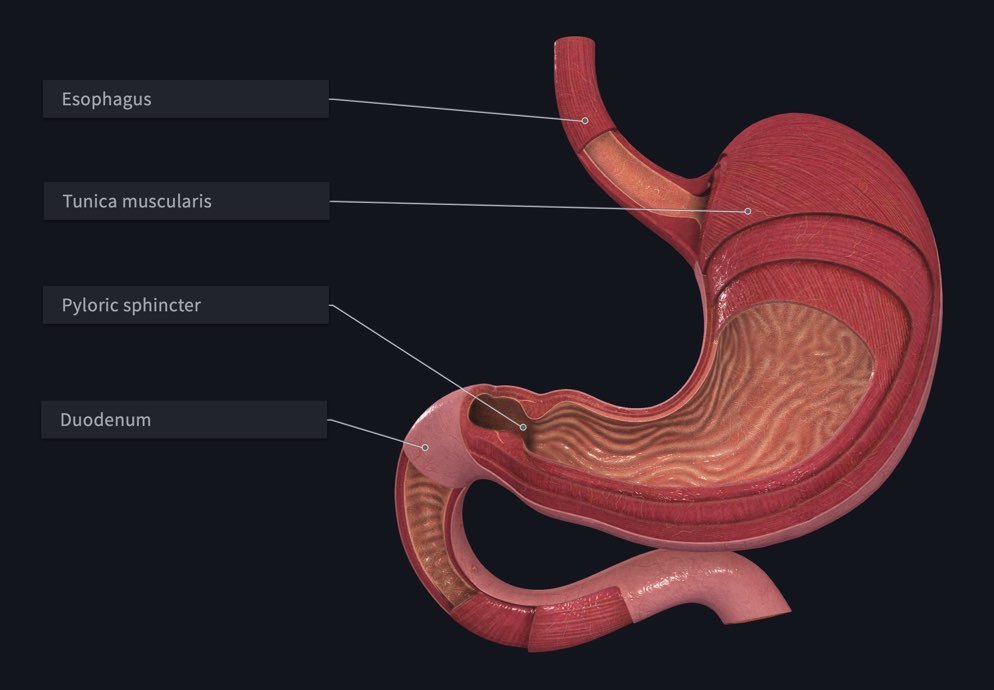
An empty stomach is roughly the size of your fist, so how does it not burst after eating a huge dinner? ?The stomach deals quite well with our inability to know when enough is enough, and can actually stretch up to 75 times its original size.
So, what happens to all this food in our stomach?
Food enters the stomach via the esophagus. At this stage it has already begun the digestion process, but relies heavily on the stomach for complete breakdown. This is achieved in two ways; mechanically and chemically.

Mechanical Digestion
Mixing waves:
The main muscle of the stomach is the muscularis propria. Its 3 layers can change shape and position to produce the mixing waves. These allow for the softening and mixing of food, leading to the production of chyme (a pulpy fluid that bears absolutely no resemblance to the food originally put into your mouth).
Gastric emptying:
Chyme is passed on to the duodenum through the pyloric sphincter through the process of gastric emptying or propulsion.
Chemical Digestion
Digestive enzymes:
The stomach carries out the chemical digestion of proteins and fats. Digestive enzymes, such as pepsin, are responsible for the breakdown of proteins, while gastric lipase breaks down triglycerides.
Hydrochloric acid (stomach acid):
Stomach acid plays a role in digestion, the immune response, signalling and the absorption of vitamin B12. It is incredibly acidic, at a pH of 1-3, it is on par with the acidity found within a battery ⚡ and even has the ability to destroy some metals.
Both digestion processes go hand in hand with one another ? Without chemicals, the food cannot be effectively broken down, and without movement, the digestive juices are not mixed properly with the food.
Hands up ? What’s your favorite food?
